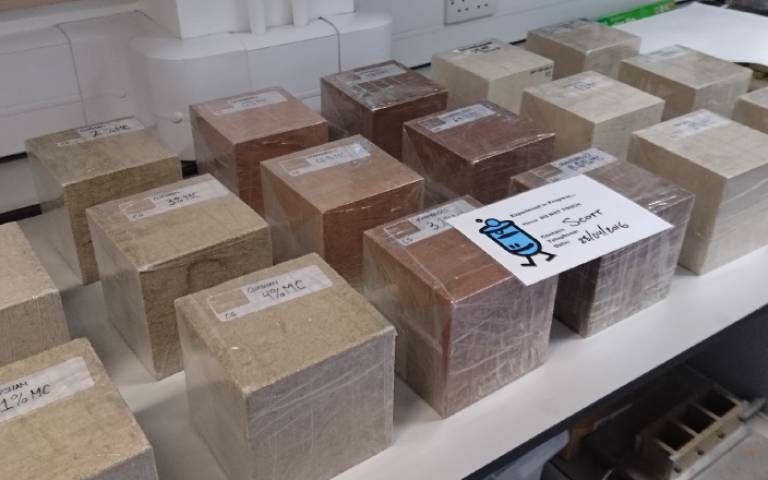S. Orr publishes on validating a more accurate calibration using an ‘isolated diffusion' approach
24 March 2019

- Heather Viles, co-author and SEAHA CDT Co-Director -
SEAHA CDT Alumnus Scott Allan Orr and supervisors from the University of Oxford, Historic Environment Scotland, and the Consarc Design Group has published a paper that presents a more accurate method for understanding how the output of non-destructive moisture measurement methods relate to the actual amount of water present.
Non-destructive techniques can be an informative part of understanding how a building is functioning in relation to its environment. They are based on measuring a physical property or phenomena, such as the interaction with electromagnetic energy, as a proxy for the amount of moisture present. However, since these measurements are influenced by several factors, such as the material, they are converted into arbitrary units to indicate relative levels of moisture.
The process of gravimetric calibration involves taking measurements with a non-destructive technique of a sample of the material of interest at several moisture contents (measured by mass) to characterise the relationship between them. Ideally, this is a directly proportional relationship (a straight line, more or less)—however, this is rarely the case. The samples need to be an appropriate size. For devices that measure within a large area, this means that the samples need to be suitably large as well.
Previous work has developed calibrations with samples that are first saturated, and then monitored while they dry out. While this is suitable for smaller samples (i.e. for calibrating devices with a small measurement area), this paper demonstrated that for devices with large measurement areas the samples of necessary size take much longer to dry out, resulting in a significant unequal distribution of moisture within the sample. This wreaks havoc on the calibration results.
To address this challenge, this paper validates that the calibrations are more accurate when using an approach described as ‘isolated diffusion’. This involves using several samples of the same material, and sealing them with impermeable plastic so that the moisture has time to evenly distribute throughout the sample. This results in more accurate and more consistent understanding of the device output from non-destructive techniques for moisture measurement.
The technique does not require any specialist equipment except for a suitable balance, meaning that it can be used by practitioners and researchers alike. It is particularly suitable for electromagnetic devices such as microwave-based tools and radar, since these do not direct contact with a surface to provide a consistent and accurate measurement.
Links
- Read the article on 'An isolated diffusion’ gravimetric calibration procedure for radar and microwave moisture measurement in porous building stone in the journal of Applied Geophysics
- School of Geography and the Environment, University of Oxford
 Close
Close

